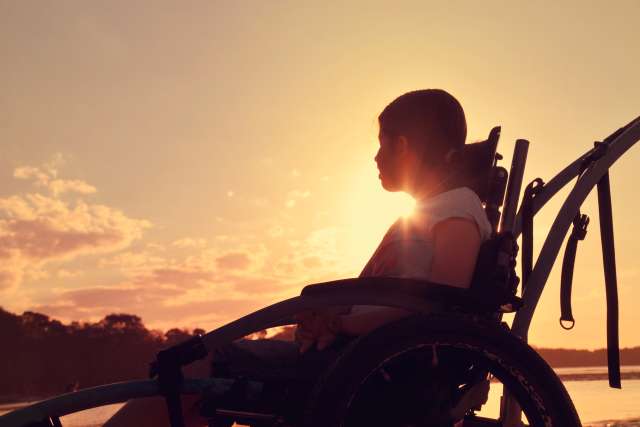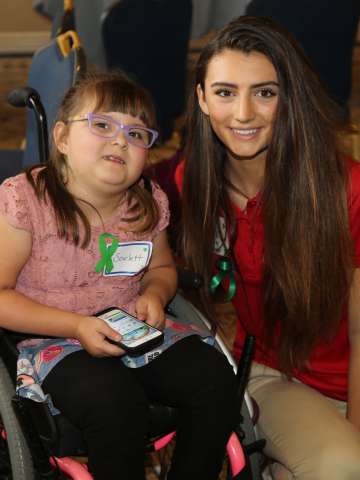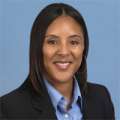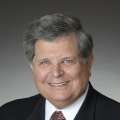Cerebral Palsy
Our multispecialty team provides comprehensive cerebral palsy care throughout a patient’s lifespan.


Why choose UCLA Health for cerebral palsy treatment?
Our specialists are dedicated to improving function in children and adults with cerebral palsy. We are the only interdisciplinary clinic in Los Angeles that evaluates and treats patients with cerebral palsy throughout their entire lives.
Highlights of our program include:
Multispecialty care: Our team includes the expertise of orthopaedic surgeons, interventional spine care specialists, nurse practitioners, social workers, physical therapists and neurosurgeons. We also work closely with neurology and developmental pediatrics and can refer patients to additional services as needed through the vast UCLA Health network.
Joint decision-making: We emphasize ability over disability. Our specialists involve patients in the decision-making process, helping them set and meet goals.
Research focus: Our research involvement allows us to offer patients groundbreaking new treatments. All patients receive care from professionals who are at the top of their field, and eligible patients have access to clinical trial treatments.
Innovation and development: UCLA Health physicians continually improve evaluation tools and treatment options. For example, our team developed a clinical assessment called Selective Control Assessment of the Lower Extremity (SCALE). This tool helps evaluate selective voluntary motor control in patients with spastic cerebral palsy.
Our areas of care
Our cerebral palsy specialists care for patients in several outpatient settings. Areas of care include:
Outpatient clinics
We run two outpatient clinics:
The Luskin Orthopaedic Insititute for Children in Los Angeles: We evaluate children and young adults under 21 at this location.
UCLA Santa Monica Medical Center: This location is a lifespan clinic where we evaluate and treat patients of all ages.
Our specialists comprehensively evaluate patients and set goals for treatment. A new patient appointment includes a biomechanical assessment and consultations with:
- Orthopaedic surgeons
- Physical medicine and rehabilitation specialists
- Physical therapists
After we develop a treatment plan, we may offer additional referrals to subspecialists, including:
- Developmental pediatricians
- Gastroenterologists
- Head and neck surgeons
- Neurologists
- Neurosurgeons
- Ophthalmologists
- Pain management specialists
- Urologists
Kameron Gait and Motion Analysis Laboratory
Each patient visits the Kameron Gait and Motion Analysis Laboratory for a full assessment of their movement abilities. This gait analysis gives our cerebral palsy specialists an in-depth understanding of movement patterns to help guide treatment plans.
The gait analysis can take up to three hours. It may include:
- Clinical examination to measure muscle strength, flexibility and motor control
- Electromyography (EMG), a diagnostic test that measures muscle and nerve function
- Force plates, tools that measure the force your body exerts on the ground when walking, balancing or moving in any way
- Motion analysis to measure joint motion and walking speed
- Oxygen consumption measurement to calculate how much energy it takes to walk
- Video analysis to record your gait when walking without any assistive equipment
What is cerebral palsy?
Cerebral palsy (CP) is a developmental disorder. Each year, approximately 10,000 children are born with CP. It is the most common childhood motor disability in the United States, affecting about 764,000 children and adults. CP develops when brain damage occurs during fetal development, during or shortly after birth, or during infancy.
CP can look different in every patient. Depending on the location and extent of the brain injury, some people have barely noticeable symptoms, while others have symptoms that significantly affect their daily function. In general, CP can affect:
- Balance and coordination
- Breathing and eating
- Intellectual abilities
- Learning abilities
- Motor control
- Speech and language
- Vision
Cerebral palsy treatments we offer
Not everyone with cerebral palsy requires ongoing treatment. Many people with the condition go to school, work and social activities without any need for medical intervention. Others benefit from treatment to increase mobility in childhood, and some may need ongoing treatment for muscle stiffness (spasticity).
Our orthopaedic team offers treatments to improve movement function, including:
Tools to increase mobility: We may offer a variety of noninvasive treatments to improve mobility and overall function. Wearing braces or using adaptive equipment such as walking aids or wheelchairs may be an effective treatment.
Physical therapy: Patients may work with a physical therapist to increase strength, flexibility and motor control. Physical therapy usually includes in-office sessions, along with a prescribed set of exercises to complete at home.
Orthopaedic surgery: When children are growing, they should be followed by an orthopaedic surgeon to monitor their bone and joint development, as well as muscle and motor function. Depending on a child’s gait and skeletal development, we may recommend surgeries to lengthen muscles or tendons, improve bone alignment or correct bone deformities.
We also offer multiple options for managing spasticity, including:
Oral medications: We often start treatment with oral medicines. Many different medications help reduce spastic movements that interfere with daily functions.
Botulinum Toxin, such as Botox ® and Dysport® is injected directly into spastic muscles to weaken them by blocking transmission between the nerve and the muscle. It works best when spasticity is a problem in only a few muscles. Examples include injection into the calf to decrease toe walking or the hamstrings to improve upright walking. It is used when full range of motion is present and is not effective when the joint cannot move due to a shortened muscle (contracture). The desired effects of botulinum toxin injections usually last four to six months, but it can cause long-term scarring and weakness that does not resolve after that time. While the injections may be repeated, we try to use this treatment very sparingly.
Intrathecal baclofen pump: A surgeon places a small battery-operated pump underneath the skin on the patient’s trunk. This pump delivers a medication called baclofen to the fluid around the spinal cord, which relaxes muscles and relieves spasms. The pump works best for patients who have spasticity affecting many muscles. It requires periodic clinic visits to refill the pump with medication.
Selective posterior rhizotomy: During this procedure, a neurosurgeon cuts a portion of the sensory nerves in the spinal cord. This removes the communication signals in the nerves that are causing spasticity. This treatment is often an effective option for children who can walk but have a lot of spasticity in their legs. It also may be beneficial for patients who don’t walk but have spasticity that interferes with comfort, positioning and care.
Deep brain stimulation: This surgery is a treatment for some patients who have spasticity along with involuntary movements (dystonia, chorea, athetosis or choreoathetosis). A neurosurgeon implants a generator inside the chest and places electrodes in the brain. The generator sends small pulses to the electrodes to correct the brain activity that’s causing irregular movements.
Meet our team
Our team provides the full spectrum of cerebral palsy care. We treat patients throughout their lifespan, offering a range of therapies that increase quality of life and well-being.
Our Expert Team

Eileen Fowler PhD, PT
Director, Kameron Gait and Motion Analysis Laboratory

Kimberly Gilliam, Administrative Assistant
Administrative Assistant

Marcia Greenberg MS, PT, KEMG
Physical Therapist

Michael L O'Hara MSW, LCSW
UCLA Field Instructor Center for Cerebral Palsy

Loretta A. Staudt PT, MS
Research Physical Therapist

Andy Vuong, Motion Analysis engineer
Motion Analysis engineer
Contact us
Call 424-259-6593 to request an appointment with a cerebral palsy specialist at UCLA Health.
Find your care
We care for patients with cerebral palsy in all life stages. To learn more about cerebral palsy treatment at UCLA Health, call 424-259-6593.




